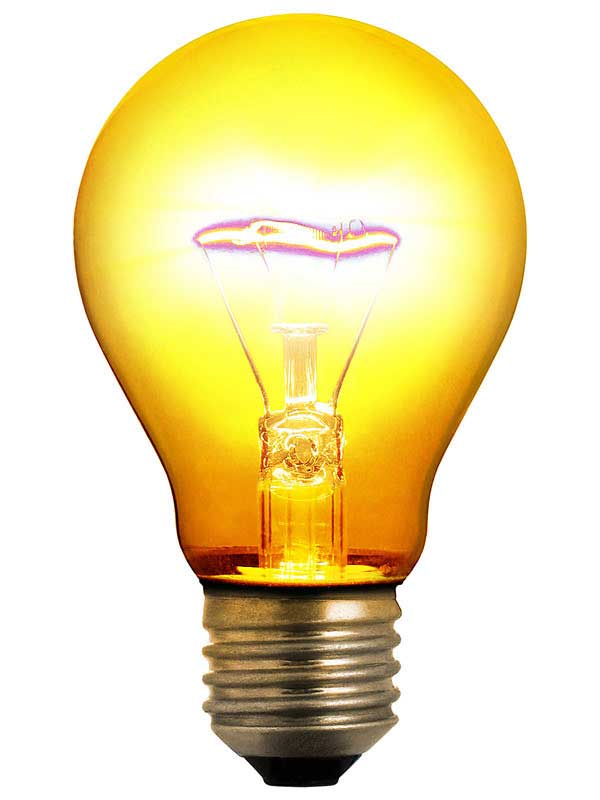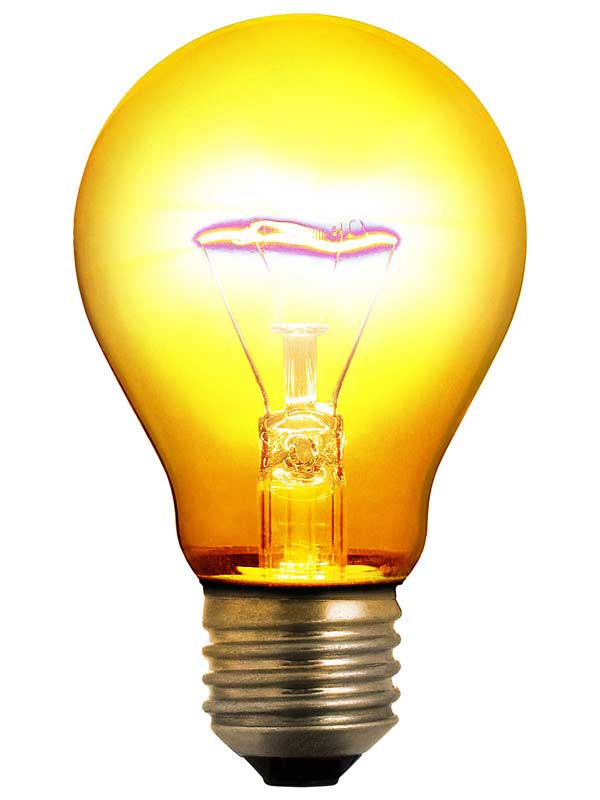Light Bulbs Actually Spur Bright Ideas, Study Reveals

Seeing light bulbs might foster bright ideas, scientists now find.
The concept that reaching an insight is much like shining a light into a dark place goes back to at least Plato. It was this philosophical analogy that actually led social psychologist Michael Slepian at Tufts University to wonder if light bulbs might actually spur insights.
"Insight has been studied for decades; it is still a very mysterious phenomenon," Slepian said.
The researchers first wanted to see if light bulbs actually were unconsciously linked to enlightenment in people's minds. In a preliminary experiment, 73 college students watched as words were flashed across a computer screen. They viewed 10 words associated with insight — such as create, conceive, and envision —10 other words and 20 non-words. They were then asked to respond as quickly and as accurately as possible if what they were shown was a word or non-word.
Comparing bulbs
The students had either a bare, unshaded incandescent 25-Watt light bulb or an overhead fluorescent light turned on in the room. Volunteers exposed to the light bulb responded quicker to words linked to insight than other words, supporting the notion that light bulbs were indeed connected to insight in their minds.

"Our environment can influence our creativity," Slepian told LiveScience.
Sign up for the Live Science daily newsletter now
Get the world’s most fascinating discoveries delivered straight to your inbox.
For instance, in the experiments:
- Seventy-nine college students were given three minutes to solve a problem where they had to connect four dots arranged in a square by drawing three connected straight lines. They were not allowed to either lift the pencil from the page or retrace a line, and had to end the drawing at the same dot it began with. (This involves drawing a triangle.) Volunteers exposed to the light bulb solved the problem twice as often as ones given the fluorescent light.
- Thirty-eight college students were given sets of three words and told to come up with another word that could form a compound with all three. For instance, a triad of words might consist of "print," "berry," and "bird," with the answer being, "blue." The light bulb led volunteers to solve 70 percent more triads correctly.
"What I find most surprising about these results is that something as elusive as the process of insight can be influenced by a subtle feature of our environment," Slepian said. "Much research has discussed insight as if it's something entirely internal to the person, that it's something that happens within you, and what we found in several studies is that something external to you can influence insight."
Another test
In case the quality of the fluorescent light was somehow influencing these results, the scientists also repeated the word triad experiment with a bare, unshaded incandescent bulb and a shaded incandescent bulb. Volunteers performed better with the bare bulb than they did with the shaded bulb.
"Our findings are not a result of the level or type of lighting, but are a function of exposure to the symbol of insight, the light bulb," Slepian explained.
These findings suggest that it takes more than light to promote enlightenment. Instead, the researchers suggest our brains respond favorably to bare lightbulbs because they are familiar symbols of insight. This kind of so-called "priming effect" has been seen before in psychology — for instance, when shown artifacts from the business world, such as briefcases, people play economic games more competitively, and exposure to the American flag triggers aggressive behavioral tendencies among regular news watchers, due perhaps to how the United States is often linked in the news to attacks both against and from other parties.
These findings could have practical applications in both schools and the workplace.
"Creativity is an important asset, and over and above individual differences in creativity, we find something as subtle as an illuminating light bulb in our environment can facilitate insight, and thus lead to more creative solutions to problems," Slepian said. "It would be fascinating to see if this works in the classroom or in the workplace."
These findings will be published in the July issue of the Journal of Experimental Social Psychology.
- Top 10 Mysteries of the Mind
- 10 Things You Didn't Know About the Brain
- 10 Ways to Keep Your Mind Sharp

Why is yawning contagious?
Scientific consensus shows race is a human invention, not biological reality









